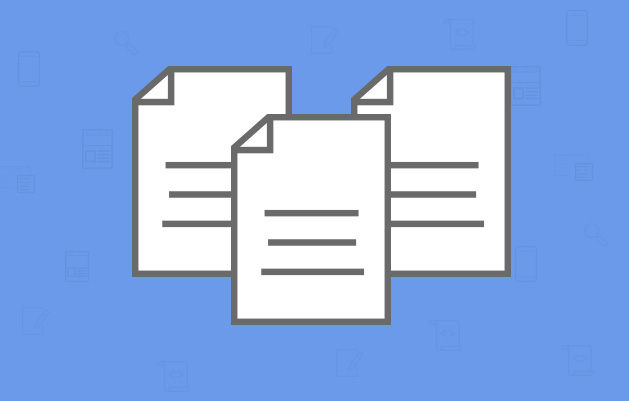
When you meet with us to discuss a new project we’re all at the beginning of a journey together. We want to make that journey as smooth as possible for you. Whether the scale of the project is a month, or a year, we like to stick to roughly the same simple process each time to ensure that we’re working at our most efficient for you.
We pride ourselves on our flexibility from client to client and project to project. With this said, by taking each step logically, there’s far less margin for error and misunderstanding on either side. We like to do this by using our 8 step plan. So, how does it work?
Step one: Project scope
This is the part where we’ll do a lot of talking, ask a lot of seemingly daft questions and try to get under the skin of your business. Some say nosy, we like to say ‘thorough’.
Because it’s going to be a bespoke design and build this is the part where we need to know anything you want in your new website. We’ve not quite mastered the skill of mind reading just yet, so the general rule is: if you don’t mention it, chances are we won’t build it!
With a bespoke build you can potentially get everything on your wishlist, but please don’t assume that it’s automatically going to be included in your new site if it hasn’t been mentioned. Because it’s being built from scratch for you, this means nothing is already ‘included’ as default functionality. It’s a blank canvas.
Step two: Content gathering
This is sometimes part of step one too. It may come as a surprise but a lot of the early work comes from you, the client. We need a little bit of your time and thoughts before we can take over and do our bit.
Why do we ask for your content before we can even start? As discussed at length in an earlier blog post here, we want to make sure we do our best to make the design fit around your content. This is much better than squishing your content into an already-designed website. Otherwise you might as well have bought one off the shelf. Your text doesn’t necessarily have to be word perfect at this point but we need to know what you want to say and in which format, how many words etc.
We have some nice software to help you make sense of your content. It helps to lay it out in an orderly fashion and share the task with multiple people and we’d be happy to help you use this to collate your thoughts.
Step three: Wireframes
This is where we’ll basically draw a line sketch of your future website to check we’ve got all of the components you’d expect and haven’t forgotten any crucial parts. It also works as a map to help make sure we’ve got each element in roughly the right place on the right page. For example if we’ve guessed that you would like plenty of imagery, minimal text and the logo top left. Then you see it drawn out and realise you’d like a lot more text and your logo front and centre. These are the things we need to know before we move to design.
At the wireframe stage it’s super easy to make any changes and swap things around.

Step four: Design visuals
These are just flat images, like a good old fashioned drawing, but done on a computer. This is largely because a. it’s 2017 and b. we’re a digital design agency so it makes loads more sense to draw it on a computer. That’s where our skills lie. It’ll be a truer reflection of the finished product than if we got our paints out.
This is often the most exciting part of the project as you’ll get to see what your new website could look like! If we’ve fully understood your brief, and nailed the wireframes before moving onto the visuals, then these designs should be a pretty good representation of your future website. If not, this is the part where we’d really need you to flag anything that’s not quite right. Once you’re 100% happy with these we’ll ask you to sign them off so we can get building.
At the design stage it’s slightly more complicated to make changes to the fundamental layout of the page than it was during wireframing. Anything you suddenly think of at the build stage is much harder to try to squash in. Backtracking can sometimes require extra project time to go back to the design stage and add it nicely.
Step five: Build
This is the point where we set up a development environment and build the flat visuals into a working website. The links will link, the nav will nagivate, images will… nevermind.
We’ll also add all of the bells and whistles at this point too; things like hover effects, loading effects and snazzy stuff that will make sure your website looks better than your competitors’.
At the build stage it’s much more complicated to make changes, and we’d need to have wrapped most, if not all, amends up in the earlier phases. Then the developers are able to just put their heads down and code to their heart’s content. They’ll use the visuals and their own genius to bring your site to life.
Step six: Testing and quality assurance
We know your website is finished, and you may have even seen it at this point, so you’re eager to get it live – but we really wouldn’t want to launch it without feeling confident that it had been fully tested.
First we’ll run all of our tests and try to break it internally. Then we generally pass it to you to try to break too. If you’re going to do something we didn’t expect with it we’d much rather know before it’s public. Once it’s been through us, our Head of Build and you and anyone you’d like to rope in, we’d be happy to schedule the launch date.
Step seven: SEO and visibility
We would strongly recommend that you enlist the help of an SEO pro before your site goes live. Unless of course you are an SEO pro.
Although we design and build your website and have a loose understanding of SEO, we don’t actually specialise in the dark art itself. It’s a full time job to keep up with all of Google’s updates. That’s why there are people out there who live and breathe Search and all of its many mysteries. These are the people you want to hire to give your site a once over before we launch it. Luckily we know a few people who fit the bill and would be happy to put you in touch with them or help arrange a meeting.
Once you’ve picked who you’d like us to work with we’ll help them gain access. Then they’ll be able to check your new site has its very best shot at being at the dizzy heights of top of the first page on Google.
Not having the SEO setup on your new site done is a bit like opening a shop in a remote part of town but not telling anyone your address. Instead you just hope that people who like what you’re selling will happen to walk past your shop while on their way to somewhere else. It’s a big internet out there. And SEO pro can help you make your presence known and increase your traffic exponentially.

Step eight: Blast off!
Once we’re happy with our work and, most importantly, you’re happy with your glorious new website, we’ll have scheduled a launch date in. This is when the whole thing will be put live on the interwebs.
Please note that there isn’t simply a Go Live Now button that can be pressed and hey presto! You’re online!
The reason we say ‘schedule in’ is because it can take a little longer than this. We want to make sure that we have plenty of time to do it right. Because after all, we’re as proud of your new website as you are.
If our process sounds like something you could get on board with and you’d like to put us through our paces then get in touch. Let’s find out how we can work together.